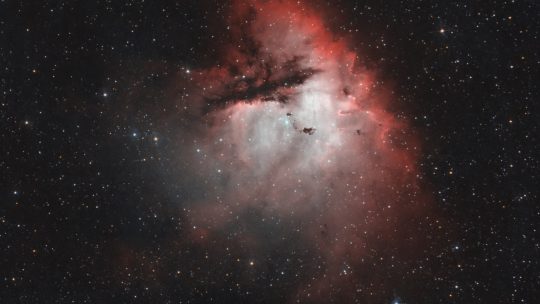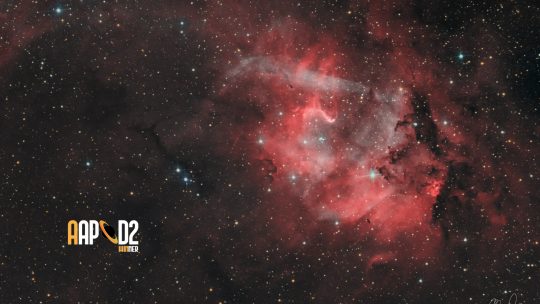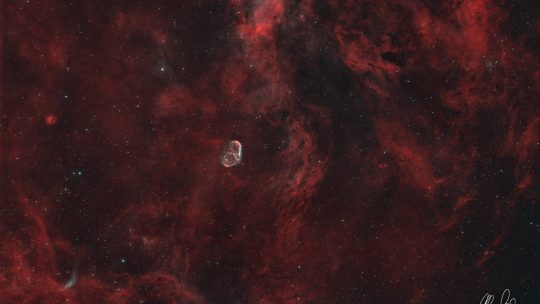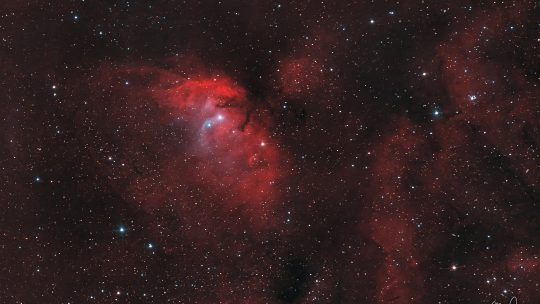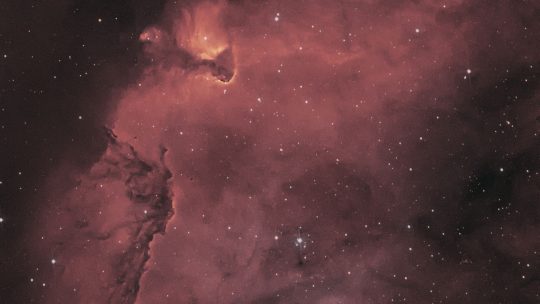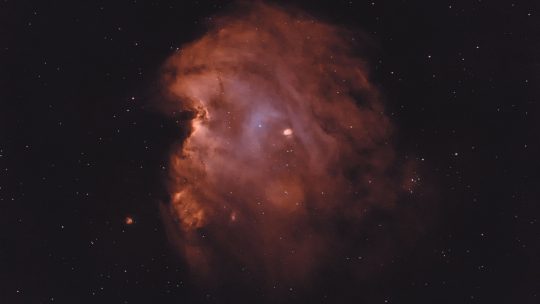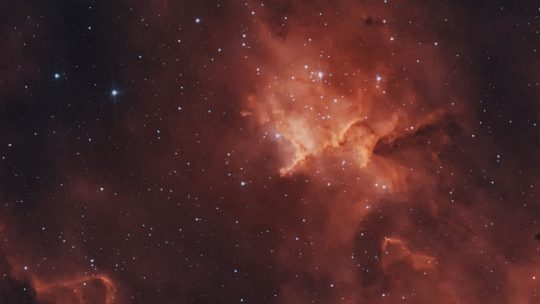ocated in the northern part of Cassiopeia constellation, this nebula is a rich HII region populated by Bok globules (which are newborn stars nursery), an open cluster and a multiple (five stars) system.Due to his shape si also known as “The...
his is actually a part of the Lion Nebula: you can see upside down the Lion’s head on the center right and his back and tail doing an arc on the top left of the picture.This region is populated by a huge number of class O and B and also by a...
This is part 1 of a bigger mosaic that i’m planning to shoot. It shows a small part of the Cygnus nebular complex with the Crescent Nebula at his center.The Crescent Nebula is an emission nebula probably formed by the outer layers of a Wolf...
his HII region is located about 6000 light years away, it’s part of the large swan nebular complex. Subject that I honestly have always underestimated, instead it reserves many details and interesting structures to see.Trivia: inside the image...
n a period between 3000 and 30000 years ago, a star exploded in supernova throwing its surface gases at a huge distance. What we see today is what is left of this explosion, which now covers an area of about 70 light years, at 5000 light years from...
longside the well-known Heart Nebula, there can only be… the Soul Nebula.It is a vast HII (ionized hydrogen) region about 7600 light-years away from us where there is a strong star formation. That framed is only the eastern section of the...
More or less 6400 light year far from here, in the Orion Constellation, lays an HII emission nebula with that strange Monkey Head shape.
ometimes it happens that you find forgotten shots and when you look at the result you remain speechless.This is the case. I had completely forgotten that I had made some shots at ngc7000 this summer, I recovered them and united but unfortunately I...
Melotte 15 Exactly at the center of IC 1805, better known as “heart nebula” is a small open star cluster recognized as “Melotte 15”. In this cluster there are 50 times more massive stars than our sun and a microquasar: a...


